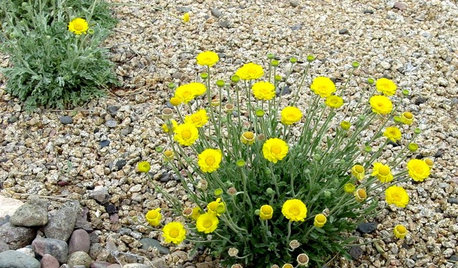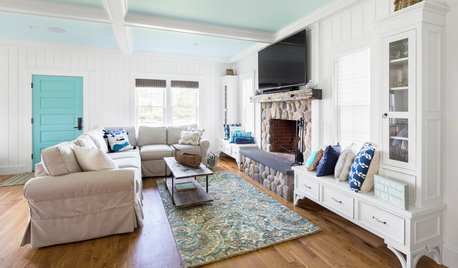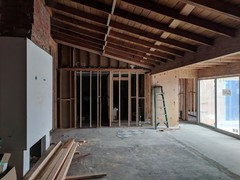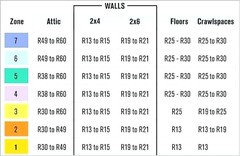Over insulating in our hot, dry climate?
Mittens Cat
4 years ago
last modified: 4 years ago
Featured Answer
Sort by:Oldest
Comments (63)
Mittens Cat
4 years agoRelated Discussions
Anyone in a Hot Dry Climate Getting Rain?
Comments (36)Diane, I watch the weather really closely now because of my bands and own root plants. I have to determine when they can handle being out in the sun, and when they need to be in the shade. The hot weather and direct sunlight can cause a quick demise for some of these fragile plants. My hubby is just a geek, he has weather related gadgets attached to our home and something in a tree. I do not get involved with any of that, but somehow, information is sent to some gizmo in the house that provides a lot information about the weather. Oh yes, that sounds right, just like July, every year here and there. It was 124 degrees one day in July; a few weeks ago, and any one with an accurate thermometer, or a more localized weather report was aware of the high temperature. After one day of that blistering heat, it dropped down to the normal highs for July in a day; which are the high 100's to 100 teens. July is brutal. But these temperatures are same for the major cities you listed. I was in Palm Desert two years ago during the summer, and it was 118 degrees. I remember saying to my husband when we walked outside " this is awful", then I said oops... we live in Las Vegas.... I had no room to talk. The difference is we were tourists and went out in the heat. During July, in Las Vegas, we go from air conditioned houses, to air conditioned automobiles, and then scurry into air conditioning buildings. The parks are empty during July. This past weekend, there were people in the parks, feeding the ducks and geese, having picnics, playing volleyball. I saw people walking to the neighborhood library and families in the nature discovery park with their young children. It was refreshing to be able to go out. I actually began amending my soil for the Fall blooms:) We average 70 days per year over 100 degrees. Phoenix takes the record for a "major city" with 110+ days over 100 degrees, often hitting the one hundred teens and sometimes above too. These temperatures are not sustained for hours; they represent the height of the heat during the day; and it almost always occurs in July here. But the people who live here now this for sure; we try to stay indoors. I have been living here for 13 years, but visiting Las Vegas here and there since 1976. I am sure there are other records as one would find for all cities, but these records are not the norm. Lynn This post was edited by desertgarden561 on Wed, Aug 28, 13 at 16:24...See MoreFinding a cool, dry place in a hot, humid climate
Comments (5)A hole in the ground would fill up with water, unless I can find a way to seal it. There are occasionally houses with basements here, but most houses just float on top of the clay. Keeping it dry could be an expensive endeavor, and it would certainly be humid :) (To give you an idea of the humidity here: Even in cool weather, I often have to run my A/C while I use the dehydrator, or the apple chips will never dry. They just... cook.) I'll have to poke around in my cabinets and see if I can find cool spots. I have a storage bench in the bedroom (my coolest room) that's not really used for anything - maybe I'll look into using that. It wouldn't be hard to add a layer of insulation, if it's needed. Thanks for the tips, everyone!...See MoreWhat to plant in hot/dry climate?
Comments (17)The reason the hot/dry mixes don't work is bc on the east coast the nights are hot and humid, not cooler and dry, like in the west. I have a hot sunny border and have tried many things that won't work in the heat of July and August here (NC). I gave up on poppies too. Bachelor's button does reseed though. Sulphereus cosmos (the orange and yellow ones) grow, but it is harder to grow the others. Here are some that flourish: Rudbeckias (Black-eyed susans), Echinacea, Yarrow, rose campion. These are all perennials and spread like crazy. Nigella reseeds and blooms in May, then has seed pods. The shorter zinnias and marigolds work. Lavender, russian sage, heath, day lilies, crocosmia. But all would have to be watered until established. Some of these could be considered invasive, so be forewarned....See MoreOT: perennials in hot, dry climate? Your opinions ,please!
Comments (33)I'm definitely going to try gauras; they look beautiful. But again, about lithodoras: Nik,fduk says it's not a true acid lover, and my soil isn't that alkaline; if it was, wouldn't I have more chlorosis issues? People say that Reine des Violettes is prone to chlorosis in alkaline soil; mine have never had it. I seem to have an impression that Excellenz Von Schubert sometimes shows mild cases of it, but my plants are all very young. What about the drainage issue; what do you think of that? the thing about the creeping thyme failing in the actual garden, but being happy elsewhere? I'm curious to try this plant again,messing with the soil a bit. I do see that on the Perennials forum, somone says that it's easier to alkalinize one's soil than it is to acidify it,but maybe soil ph isn't what the problem was......See MoreMittens Cat
4 years agoCharles Ross Homes
4 years agoMittens Cat
4 years agoMittens Cat
4 years agoJeffrey R. Grenz, General Contractor
4 years agoMittens Cat thanked Jeffrey R. Grenz, General ContractorElmer J Fudd
4 years agolast modified: 4 years agoMittens Cat
4 years agoMittens Cat
4 years agoJeffrey R. Grenz, General Contractor
4 years agolast modified: 4 years agoMittens Cat thanked Jeffrey R. Grenz, General ContractorMittens Cat
4 years agoMittens Cat
4 years agoJeffrey R. Grenz, General Contractor
4 years agoMittens Cat thanked Jeffrey R. Grenz, General ContractorMittens Cat
4 years agoMittens Cat
4 years agoMittens Cat
4 years agoUser
4 years agoMittens Cat
4 years agolast modified: 4 years agoUser
4 years agoUser
4 years agoMrs. S
4 years agoMittens Cat
4 years agoUser
4 years agoUser
4 years agolast modified: 4 years agoElmer J Fudd
4 years agolast modified: 4 years agoElmer J Fudd
4 years agolast modified: 4 years agoDavid Cary
4 years agolast modified: 4 years agoElmer J Fudd
4 years agolast modified: 4 years agoUser
4 years agoMrs. S
4 years agolast modified: 4 years agoElmer J Fudd
4 years ago
Related Stories

GARDENING GUIDESGreat Garden Combo: 3 Soft-Looking Plants for a Dry Climate
Weave a romantic tapestry with this drought-tolerant combination of plants as tough as they are lovely
Full Story
GARDENING GUIDESGreat Design Plant: Desert Marigold Cheers Up Hot, Dry Areas
Sunny but tough, this perennial thrives with little water and lots of sun
Full Story
MOST POPULARDesign Debate: Is It OK to Hang the TV Over the Fireplace?
In the spirit of the upcoming political debates, we kick off a series of conversations on hotly contested design topics
Full Story
GARDENING GUIDESGreat Design Plant: Callirhoe Involucrata Wakes Up Hot Garden Spots
Give a dry and sunny garden a jolt of violet-pink color summer to fall — and watch bees and butterflies flock to the nectar
Full Story
GARDENING GUIDES6 Dependable Ground Covers for Warm Climates
Swap some lawn for these drought-tolerant clumping plants — and watch your maintenance efforts diminish while they easily grow
Full Story
KNOW YOUR HOUSEKnow Your House: The Basics of Insulated Concrete Form Construction
Get peace and quiet inside and energy efficiency all around with this heavy-duty alternative to wood-frame construction
Full Story
GREEN BUILDINGInsulation Basics: Heat, R-Value and the Building Envelope
Learn how heat moves through a home and the materials that can stop it, to make sure your insulation is as effective as you think
Full Story
GREEN BUILDINGInsulation Basics: Designing for Temperature Extremes in Any Season
Stay comfy during unpredictable weather — and prevent unexpected bills — by efficiently insulating and shading your home
Full Story
GREEN BUILDINGInsulation Basics: Natural and Recycled Materials
Consider sheep’s wool, denim, cork, cellulose and more for an ecofriendly insulation choice
Full Story
GARDENING GUIDESGot a Hot, Humid Landscape? Add Tropical Flair With Air Plants
Turn tree trunks and walls into lush canvases with plants adapted to the canopies of the rainforest
Full Story






sktn77a